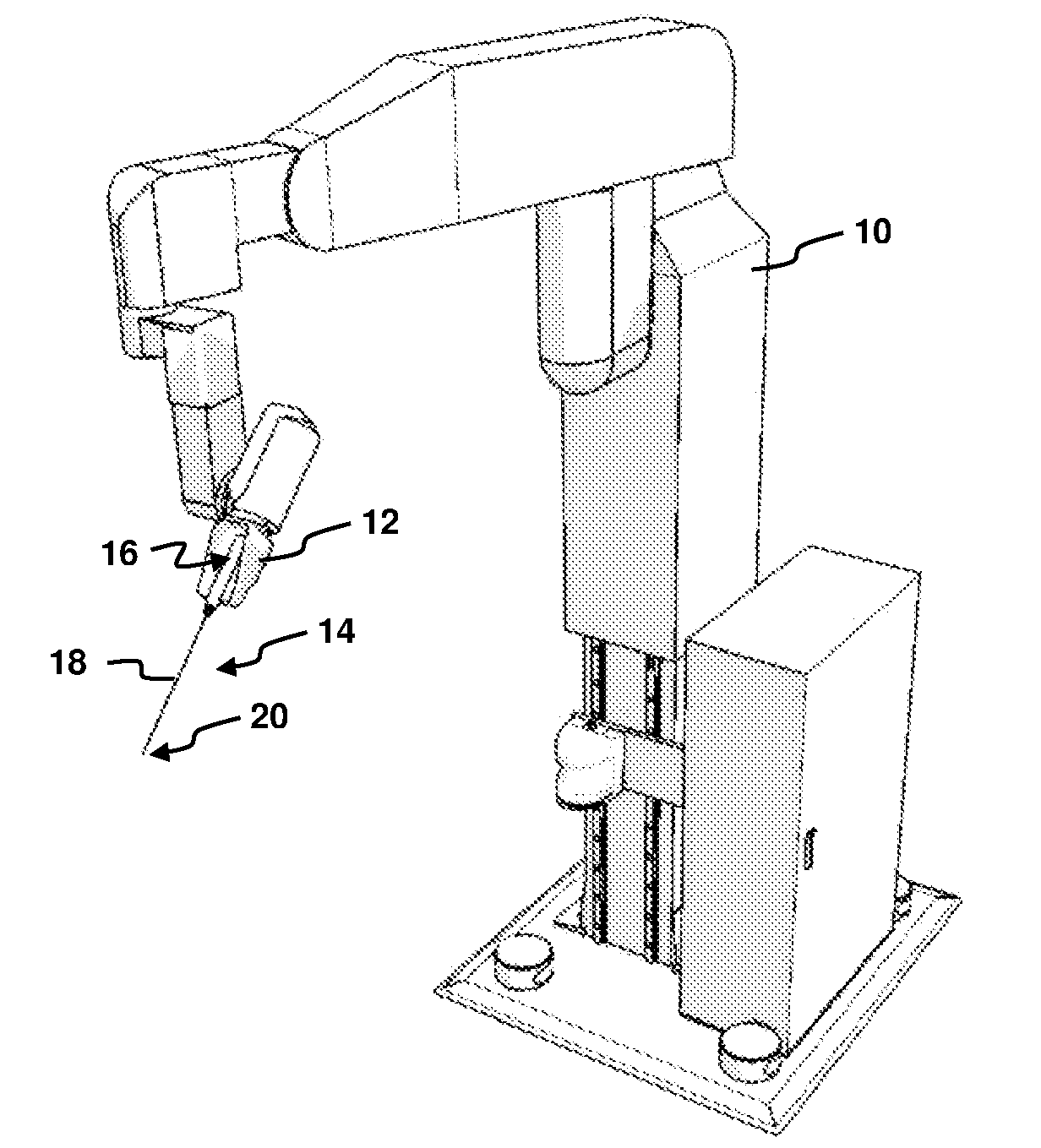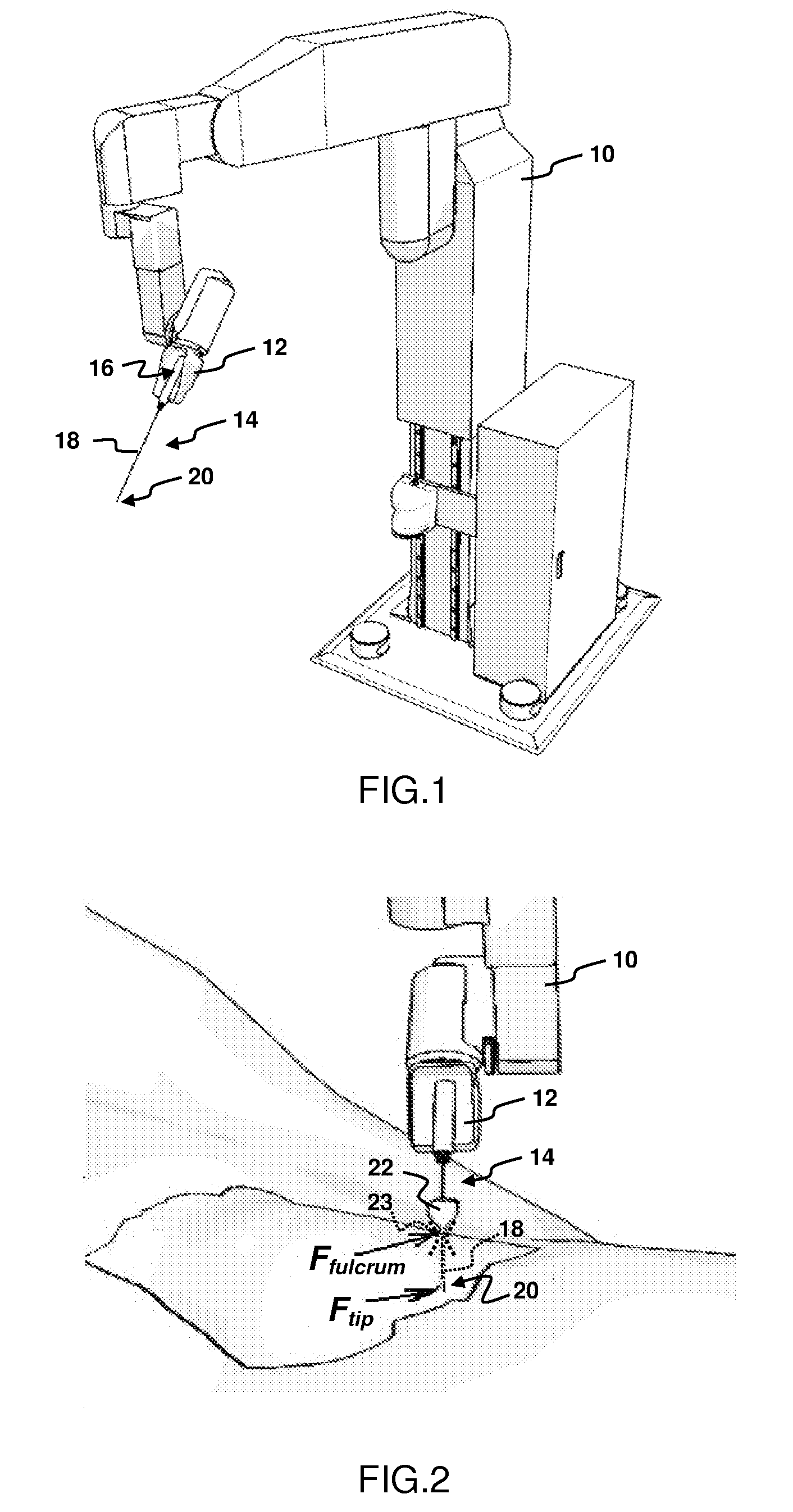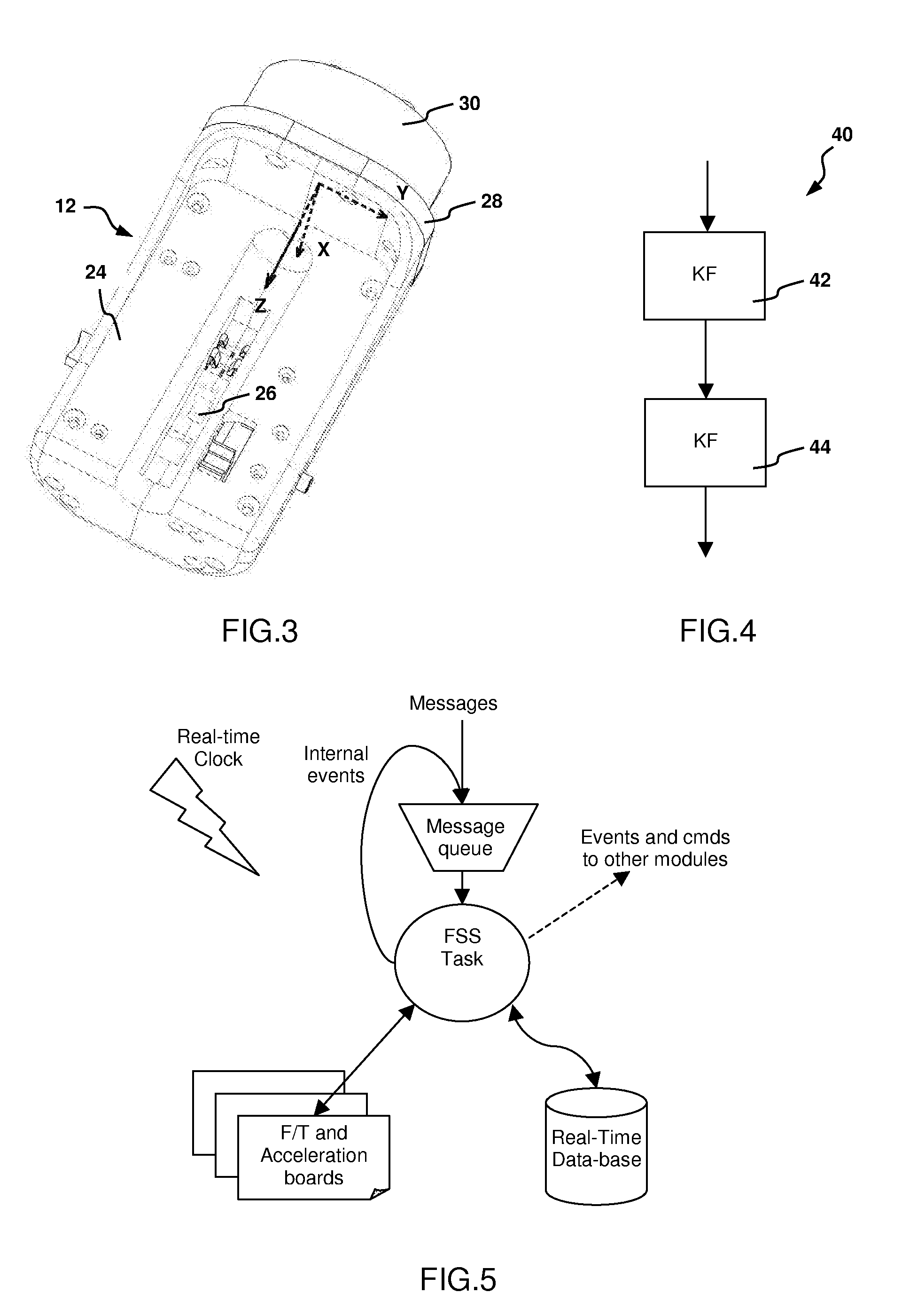Force estimation for a minimally invasive robotic surgery system
a robotic surgery and force estimation technology, applied in the field of minimally invasive medical procedures, can solve the problems of reduced dexterity and poor tactile perception, limited field of view, and surgeon operating in uncomfortable and tiring posture, and achieve the effect of cost-effective and efficien
- Summary
- Abstract
- Description
- Claims
- Application Information
AI Technical Summary
Benefits of technology
Problems solved by technology
Method used
Image
Examples
Embodiment Construction
System Components and Mechanical Configuration
[0053]FIG. 1 shows the main mechanical components of the minimally invasive medical system according to the invention. The system comprises a robot manipulator, generally identified by reference numeral 10. An effector unit 12 is connected to a flange of the manipulator 10. A minimally invasive instrument 14, is mounted with a first end 16 to the effector unit as shown in FIG. 1. The instrument 14 comprises an elongated shaft 18 with a tip 20 forming the second end of the instrument 14. At its tip 20, the instrument 14 normally comprises a specific tool e.g. grasper, scissor, hook, coagulator, etc. The robot manipulator 10 itself provides 6 degrees of freedom (DOF) by means of a PRP-RRR joint arrangement for positioning and orienting the effector unit 12, the effector unit 12 being mounted to the foremost rotational (R) joint for rotating the minimally invasive instrument 14 about the 6th DOF of the manipulator 10 which coincides with th...
PUM
 Login to View More
Login to View More Abstract
Description
Claims
Application Information
 Login to View More
Login to View More - R&D
- Intellectual Property
- Life Sciences
- Materials
- Tech Scout
- Unparalleled Data Quality
- Higher Quality Content
- 60% Fewer Hallucinations
Browse by: Latest US Patents, China's latest patents, Technical Efficacy Thesaurus, Application Domain, Technology Topic, Popular Technical Reports.
© 2025 PatSnap. All rights reserved.Legal|Privacy policy|Modern Slavery Act Transparency Statement|Sitemap|About US| Contact US: help@patsnap.com



